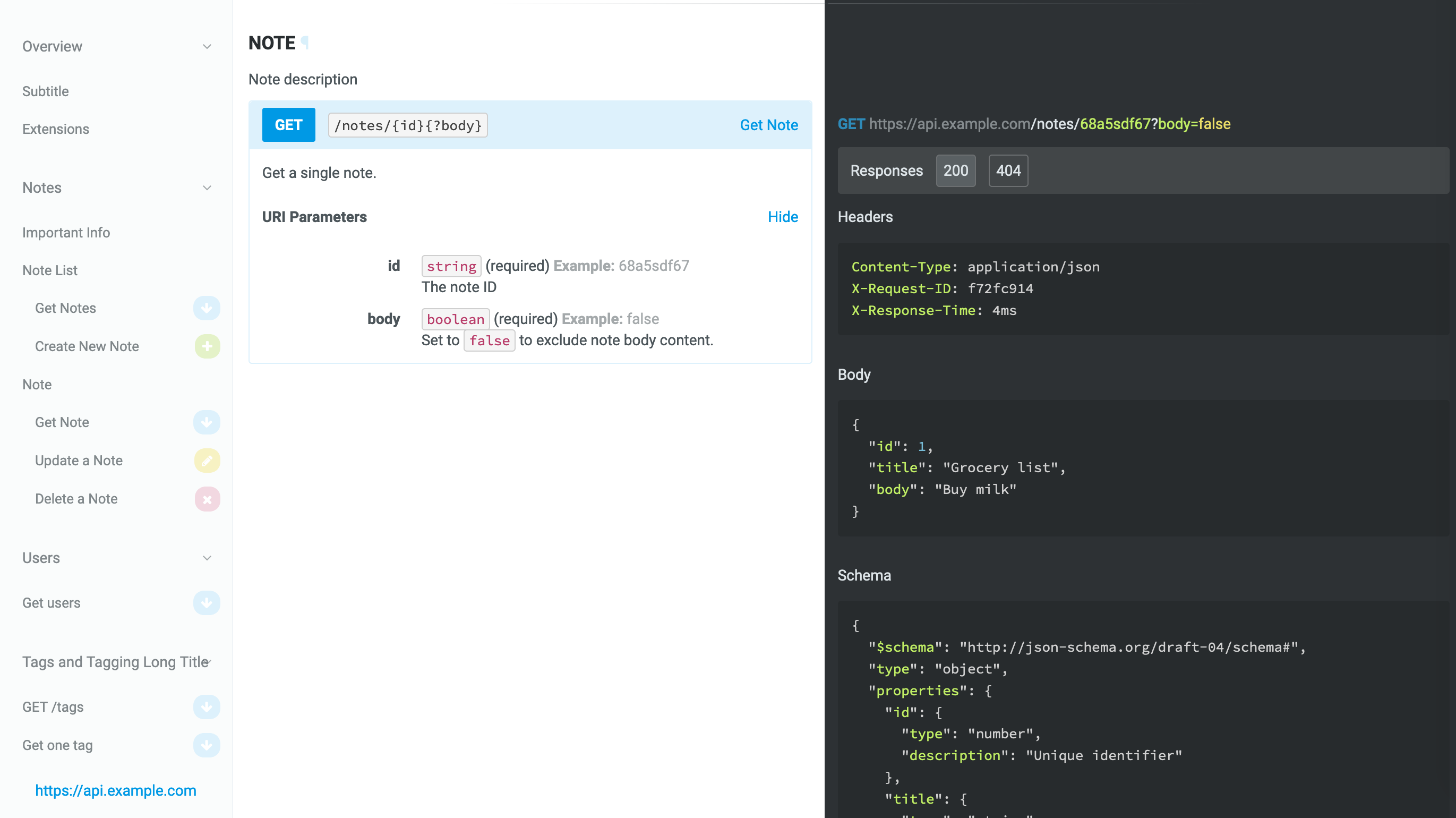Aglio¶
Aglio Backend for Foliant¶

Aglio backend generates API documentation from API Blueprint using aglio renderer.
This backend operates the site target.
Note, that aglio is designed to render API Blueprint documents. Blueprint syntax is very close to that of Markdown and you may be tempted to use this backend as a general purpose static site generator. It may work in some cases, but is not guaranteed to work in all of them.
Installation¶
$ pip install foliantcontrib.aglio
To use this backend Aglio should be installed on your system:
$ npm install -g aglio
To test if you've installed aglio properly run the aglio -h command, which should return you a list of options.
Usage¶
To generate a static website from your Foliant project run the following command:
$ foliant make site --with aglio
Parsing config... Done
Applying preprocessor flatten... Done
Applying preprocessor _unescape... Done
Making site... Done
────────────────────
Result: My_Awesome_Project.aglio
Config¶
You don't have to put anything in the config to use aglio backend. If it's installed, Foliant detects it.
To customize the output, use options in backend_config.aglio section:
backend_config:
aglio:
aglio_path: aglio
params:
theme-variables: flatly
fullWidth: True
aglio_path- Path to the aglio binary. Default:
aglio params- Parameters which will be supplied to the
agliocommand. To get the list of possible parameters, runaglio -hor check the official docs.
Customizing output¶
Templates¶
You can customize the appearance of the static website build by aglio with Jade templates. Aglio has two built-in templates:
default— two-column web-page;triple— three-column web-page.
To add your own template, follow the instructions in the official docs.
To specify the template add the theme-template field to the params option:
backend_config:
aglio:
params:
theme-template: triple
Color scheme¶
You can customize the color scheme of the website by specifying the color scheme name in theme-variables param.
Available built-in color schemes:
default,cyborg,flatly,slate,streak.
You can also specify your own scheme in a LESS or CSS file.
backend_config:
aglio:
params:
theme-variables: flatly
Stylesheets¶
Finally, you can provide custom stylesheets in a LESS or CSS file in theme-style param:
backend_config:
aglio:
params:
theme-style: !path my-style.less

